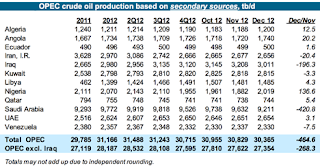Immediately after the Second World War Britain needed the coal to power the reconstruction of the country, but in the time that I was in college it was already clear that the days of unrestricted mining were over, and the transition to other fuels had already begun. It was not, however, the air pollution in Leeds that was the driving force for the regulations, but more likely the presence of similar smogs in London and the South, where those who governed the country lived. The major legislation began after the Great Smog of 1952. In a four-day period at the beginning of December the combination of a fog, an inversion in the immediate atmosphere, and the increased use of coal fires to provide additional warmth generated a smog that is blamed for the immediate death of around 4,000 people and a strong influence on the consequent death of some 8,000 others.
I bring this up because the air pollution in both Beijing, and in New Delhi is reaching levels where the government is beginning to move to help abate the immediate problem. In both capitals it is a combination of vehicle exhaust and power generation that is generating the problem, whereas back in the UK, fifty and sixty years ago, vehicular exhaust was not nearly as much of a problem as burning coal. Yet, I suspect that those problems in Asia are not yet at the levels that they reached in the UK, they may be less tractable of solution.
Burning coal to generate power remains a relatively simple process, as does mining of the coal, for which a realistic estimate would suggest that there remains, for now, a plentiful sufficiency. (That latter point is, however, disputed by some). The EIA has recently pointed out, that we are at a point where China is about to consume about half of the global supply of coal each year.
Figure 1. Chinese coal consumption relative to that of the rest of the world. (EIA)
At the rate of increase reported, it is likely that the two lines will cross before the end of this year. However it should also be noted that India has been importing more thermal coal than China (a projected 118 million tons for 2012, in contrast with the 102 million tons imported by China). And as Mongolian coal becomes more available, so India may take over parts of the international supply that now flows to China from Australia, Indonesia and Africa.
The need for increasing levels of power to sustain the growth rates of India and China are most often discussed in terms of the oil and natural gas that these two countries are consuming, but it has been estimated that India has a shortage of around 10% between the level of demand and actual supply, leading to crippling blackouts, such as that of last July.
It should be noted that the levels of air pollution from power generation can be controlled. The United States uses most of the roughly billion tons of coal a year that it produces for power consumption, but air quality has been successively cleaned to higher standards over the decades, so that smogs are now only a historic curiosity.
Figure 2. Coal consumption in the United States by end use. (EIA )
The efforts of the EPA, among others, have had a considerable impact on American Air Quality. This, for example, is the median air quality index for the District of Columbia over the past 30 years. (I am not sure where to get earlier data).
Figure 3. Median Air Quality Index for Washington D.C. (EPA )
It is thus, demonstrably possible for China and India to clean up their air, even as they increase their demand for coal. It should also be noted that over those past 30 years the miles that Americans drive has also increased, as I recently commented, and so, based on the above, the argument applies also to vehicular exhaust.
It is true that part of the imposed solution to date, in terms of the American coal used, has transferred demand to the lower sulfur coals of Wyoming, rather than the higher calorific value, but also higher sulfur contents of more Eastern states, but as regulations have changed the power plant requirements, so some of that earlier loss to Wyoming is being recovered.
Figure 4. The top coal shipping and receiving states in the third quarter of 2012 (EIA )
Based on American experience it is thus demonstrable that both China and India could clean up their air to American standards, while still generating the power that they need through burning coal. Unfortunately, however, as the experience with mine accidents in China has shown, there are still too many operations too far from Beijing for central regulation to be, as yet, fully enforced and complied with.
Addendum The Air Quality Index should be described. As the EPA Airnow site explains:
EPA calculates the AQI for five major air pollutants regulated by the Clean Air Act: ground-level ozone, particle pollution (also known as particulate matter), carbon monoxide, sulfur dioxide, and nitrogen dioxide. For each of these pollutants, EPA has established national air quality standards to protect public health .Ground-level ozone and airborne particles are the two pollutants that pose the greatest threat to human health in this country.
Figure 5. The gradation of the Air Quality Index. (EPA)


































